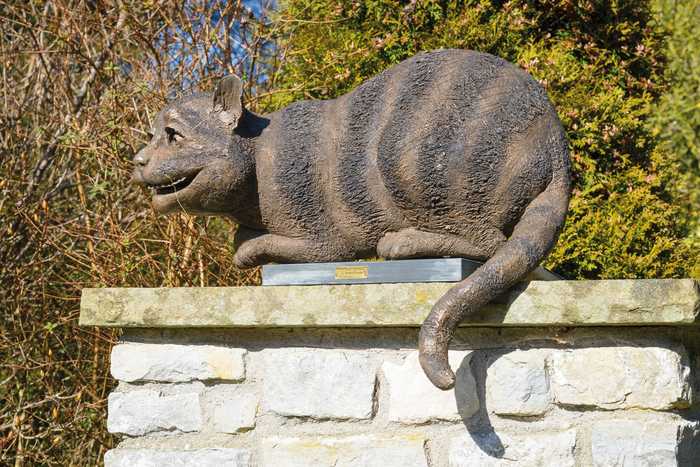5 Children's Novels to Whisk You Back to Your Childhood
"When I used to read fairy tales,
I fancied that kind of thing never happened,
and now here I am in the middle of one!"
There’s a story behind every sculpture that emerges from the Robert James Workshop. In every sweeping curve of polished bronze; beneath each carefully captured expression and delicate broderie anglaise, there are centuries of classic literature providing the inspiration.
We adore the beautifully woven stories of Beatrix Potter and Lewis Carroll—to name but two authors—and, equally, the illustrations that bring each page to life and stoke the fires of our imagination.
Here are just a few of the tales from classic children’s literature that will forever find a home on our bookshelves.
1. Peter Pan, J.M Barrie (1911)
“All the world is made of faith, and trust, and pixie dust.”
Peter Pan first flew into popular culture in J.M Barrie’s 1902 novel Little White Bird. After a brief sojourn as a stage play, also created by Barrie, the tale of the boy who wouldn’t grow up was expanded and transformed into the timeless story we know and love today.
A thrilling adventure ripe with magic and fairy dust, Peter Pan is also tinged with elements of bittersweet. While Peter will remain forever young, trapped in a world of innocence and carefree wonder, Wendy Darling and her brothers will inevitably grow old and leave Peter behind in eternal childhood:
"All children, except one, grow up. They soon know that they will grow up, and the way Wendy knew was this. One day when she was two years old she was playing in a garden, and she plucked another flower and ran with it to her mother. I suppose she must have looked rather delightful, for Mrs. Darling put her hand to her heart and cried, "Oh, why can't you remain like this for ever!""
Set in the faraway mythical island of Neverland, the 100-year-old tale plots the escapades of Peter, his friendship with the Darling family, the Lost Boys, and his fairy Tinker Bell, and the ongoing hostilities with the pirate, Captain Hook.
Here, J.M Barrie describes the wondrous surroundings of Peter Pan’s homeland:
“Of all the delectable islands the Neverland is the snuggest and most compact, not large and sprawly, you know, with tedious distances between one adventure and another, but nicely crammed. When you play at it by day with the chairs and table-cloth, it is not in the least alarming, but in the two minutes before you go to sleep it becomes very nearly real. That is why there are night-lights.”
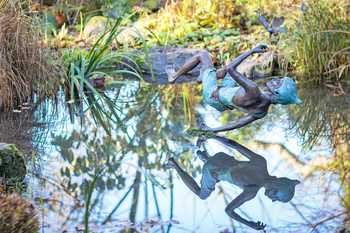
2. Alice’s Adventures in Wonderland, Lewis Carroll (1865)
“It’s no use going back to yesterday, because I was a different person then.”
Lewis Carroll’s famous masterwork follows the charming, often bizarre adventures of Alice; a young Victorian girl who falls asleep in a meadow and dreams of following the pocket watch-carrying White Rabbit down a rabbit hole:
"The rabbit-hole went straight on like a tunnel for some way, and then dipped suddenly down, so suddenly that Alice had not a moment to think about stopping herself before she found herself falling down a very deep well.
Either the well was very deep, or she fell very slowly, for she had plenty of time as she went down to look about her and to wonder what was going to happen next."
Embroiled in a series of delightfully illogical episodes, meeting a whole cast of extraordinary characters along the way, this is a story that’s captured the interest of both adults and children since its 1865 publication. From hookah-smoking Caterpillars, Sleepy Gryphons and Cheshire Cats; to absurd endless tea parties with the Mad Hatter and March Hare—with just enough time for a game of flamingo croquet with the foul-tempered Queen of Hearts.
Here’s Lewis Carroll describing a confusing but well-attended event in the chapter, A Caucus-Race and a long Tale:
"When they had been running half an hour or so, and were quite dry again, the Dodo suddenly called out `The race is over!' and they all crowded round it, panting, and asking, `But who has won?”'

3. The Tale of Jemima Puddle-Duck, Beatrix Potter (1908)
"Jemima Puddle-duck was a simpleton: not even the mention of sage and onions made her suspicious."
Alongside the famous tales of Peter Rabbit and Mr. Jeremy Fisher, the Tale of Jemima Puddle-Duck is one of Beatrix Potter’s most beloved children’s stories. The plot tumbles into action when a farmer's wife refuses to let any ducks onto the farm to lay their eggs—causing poor Jemima no end of upset!
Not to be perturbed, our feathered hero decides to venture out into the woods to do as nature intended. Soon enough, she stumbles across a gentleman fox—later known as the disagreeable Mr Tod—who informs Jemima that there’s a small house and shed in a nearby clearing in which she can lay her eggs in peace. Unfortunately, Jemima doesn’t realize that the wily fox has plans afoot to make a dinner of our amiable duck!
We’ll let Beatrix Potter herself open the memorable yarn:
‘Listen to the story of Jemima Puddle-duck, who was annoyed because the farmer’s wife would not let her hatch her own eggs.
Her sister-in-law, Mrs. Rebeccah Puddle-duck, was perfectly willing to leave the hatching to someone else— “I have not the patience to sit on a nest for twenty-eight days; and no more have you, Jemima. You would let them go cold; you know you would!”’
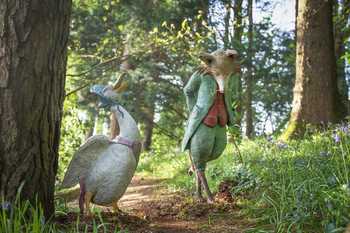
4. Wind in the Willows, Kenneth Graham (1908)
“Believe me, my young friend, there is nothing – absolutely nothing – half so much worth doing as simply messing about in boats.”
Kenneth Graham’s quintessentially British novel follows the adventures of Mole, Rat, Toad, and Badger in the bucolic English countryside. While retaining their unique animal characteristics, the smartly-dressed creatures spend their days experiencing the joys of a human existence: conversing, philosophizing, even indulging in a spot of river punting!
"'Once, it was nothing but sailing,' said the Rat, 'Then he tired of that and took to punting. Nothing would please him but to punt all day and every day, and a nice mess he made of it. Last year it was house-boating, and we all had to go and stay with him in his house-boat, and pretend we liked it. He was going to spend the rest of his life in a house-boat. It's all the same, whatever he takes up; he gets tired of it, and starts on something fresh.'"
The classic tale story unfolds when Mole decides to abandon his spring cleaning duties and instead head to the riverbank. There he meets his good friend Rat, a charming water vole, with whom Mole spends the spring and summer with.
Here’s the rambunctious Toad of Toad Hall in typically free-spirited form:
“Take the adventure, heed the call, now ere the irrevocable moment passes! ‘Tis but a banging of the door behind you, a blithesome step forward, and you are out of the old life and into the new! Then some day, some day long hence, jog home here if you will, when the cup has been drained and the play has been played, and sit down by your quiet river with a store of goodly memories for company.”
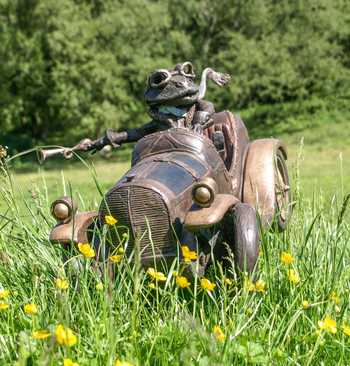
5. Watership Down, Richard Adams (1972)
"My heart has joined the Thousand, for my friend stopped running today."
Set in the brooding moorlands of southern England, Watership Down is an absorbing survival and adventure novel by the English author Richard Adams. At the heart of the story are the rabbits Fiver, Clover and Hazel, and the rest of the Watership warren, as they clash with brutal Efafra warren, lead by General Woundwort:
While the rabbits exist in their natural wild surroundings—with woodlands, burrows and stark rolling hills—they’ve also established their own language, culture, proverbs, mythology…even poetry. Calling on grandiose themes of religion, war and politics, the novel plots the rabbits escape from their doomed warren and the search for a new home:
"The May sunset was red in clouds, and there was still half an hour to twilight. The dry slope was dotted with rabbits -- some nibbling at the thin grass near their holes, others pushing further down to look for dandelions or perhaps a cowslip that the rest had missed. Here and there one sat upright on an ant heap and looked about, with ears erect and nose in the wind."
As well as the enthralling blend of lapine characters, the novel features plenty of other unforgettable creations, including Kehaar, the black-headed seagull and eventual ally to the warren rabbits.
Here’s Richard Adams exploring the philosophical merits of human proverbs:
“Human beings say, "It never rains but it pours." This is not very apt, for it frequently does rain without pouring. The rabbits' proverb is better expressed. They say, "One cloud feels lonely": and indeed it is true that the sky will soon be overcast.”
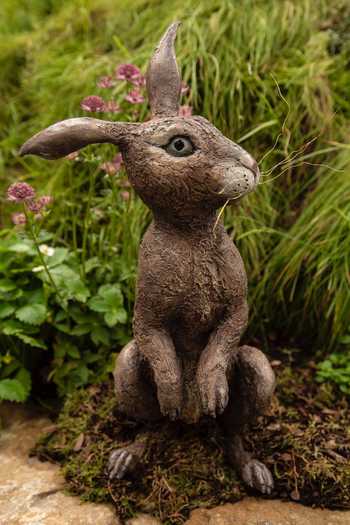
Posted on June 1st 2022

